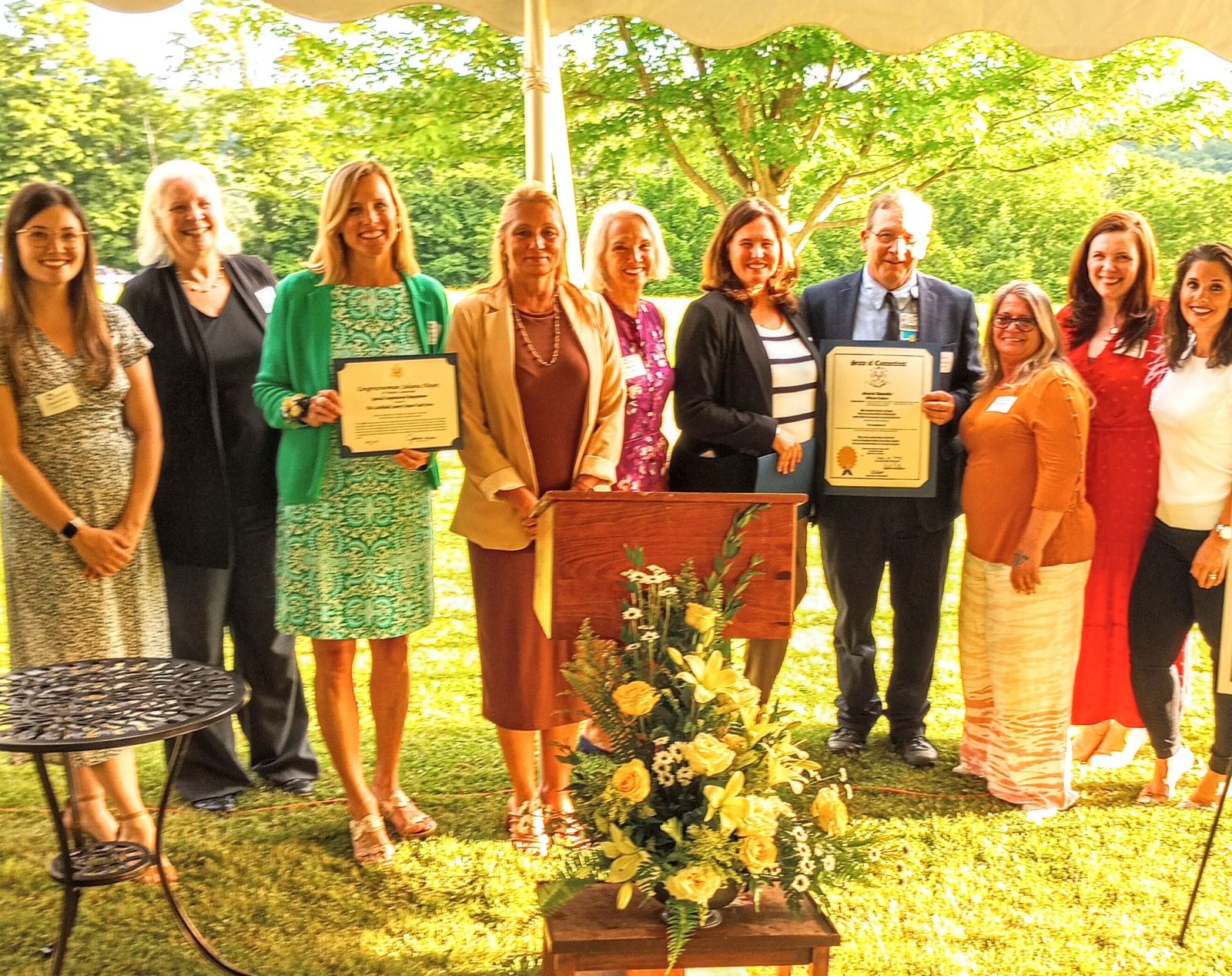<< Back
In Litchfield County, the Focus Is on Helping Those Struggling With Substance Use

September 26, 2023
Nowhere is safe during the opioid epidemic, including rural areas.
“Right this moment, somewhere in Litchfield County, a member of the Litchfield County Opiate Task Force is providing care to someone struggling with opioids,” says Tom Narducci, administrative director of behavioral health at Charlotte Hungerford Hospital.
The Litchfield County Opiate Task Force – a group of 60 agencies representing nonprofits, health departments, state and local governments, treatment facilities, schools, Hartford HealthCare, law enforcement and religious organizations – received the Northwest Connecticut Chamber of Commerce’s Quality of Life Award in June.
”Quality of life, in our work, starts with just keeping someone alive through very real, community-based ‘life or death’ work provided by task force members over the last 10 years,” says Narducci, who co-chairs the task force with Maria Coutant-Skinner, LCSW, CEO of McCall Behavioral Health Network. “Our task force members have saved countless lives over the past decade and help many to begin a journey of recovery.”
Four goals drive the community-based work
Task force members organize the work around the group’s four goals:
- Improving access to care
- Enhancing collaboration and data sharing among service providers
- Reducing substance use and misuse in the community
- Sharing information and resources about addiction, prevention, safety, and treatment with other task force members and with the community
“We have a single call to action with myriad pathways for the work,” says Coutant-Skinner. “We aim to reduce the harm done by the addiction epidemic. We work to save lives. That work takes many forms and as we often say, this epidemic affects us all and therefore the solutions, and the work, must involve us all.”
How harm reduction helps those addicted to opioids
One strategy task force members employ when working in the community is “harm reduction,” which includes helping people use more safely, manage their use, abstain, and meeting people who use drugs “where they’re at,” addressing conditions of use along with the use itself.
Task force members have “rovers” – mobile tool boxes – they use in the community to connect people with resources like naloxone, which can help save a life during an opioid overdose, and special strips to test opioids for deadly fentanyl.
Additionally, the task force monitors overdose statistics in real time, activating team members when they notice spikes in overdoses. Teams are dispatched using an app that helps coordinate the response, allows the group to get resources like naloxone into the community and provide connections to care.
Community partnerships help broaden the scope of work
The task force – which is involved in the Rural Communities Opioid Response Program (RCORP), a multi-year federally-funded initiative that addresses barriers to treatment for substance use disorder and opioid use disorder – has formed partnerships with local businesses, which now have naloxone onsite and trained employees who can administer it when necessary.
Members also meet weekly with local law enforcement and first responders to help enhance referrals to treatment and mental health services.